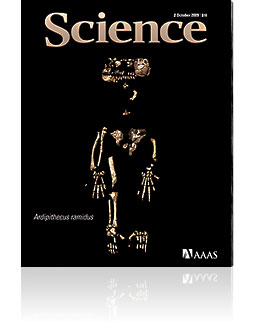In the last post of this blog I made a defense of slacktivists in general, though I ended up agreeing with so many points made by Evgeny Morozov that slacktivists will still not be able to hold their own convention. This post will also be in support of slacktivists, but this time as an essential audience for change-agent organizations.
My last post took the perspective of one who fits into the slacktivist demographic, though I believe that the demographic is more diverse than appreciated. This time I am going to consider the issue from organizations that need large numbers to directly support their efforts through activism and funding, or to support larger scale efforts to initiate change through other government and social organizations. The Millennium Development Goals involve both approaches in bringing them to fruition.
There are numerous organizations struggling to meet the challenges of implementing the objectives of each of the Millennium Development Goals. These organizations often involve professionals on-the-ground seeking to increase awareness and derive support from a larger and usually less expert base. There is also an overall effort to get developed countries to meet their promise of fully funding the Millennium Development Goals. The Stand Up and Take Action event is an example.
The first set and the second set of activism are natural allies. For the organizations seeking to implement each of the particular objectives of the Millennium Development Goals, the struggle to push the larger agenda is no doubt important, but I cannot see it as a defining goal. Whether or not a certain number of people stand up on October 16th, those organizations working in Africa to eradicate typhoid or to provide universal education in India will still be at work. However, for those working in the second category for global political change, which is what we are talking about, having the first group of on-the-ground change-agents is not enough to positively influence the fundamental source of change in the leading developed countries, the mainstream voting majority. This majority cannot be defined by political affiliation alone because no one makes up a super majority. It does have one general defining aspect and that is, for the most part, for most of the time, non-activist.
Here again, I agree with Evgeny Morozov.
Of course, the ideal case here is when one's participation in digital activism doesn't subtract from -- and instead enhances -- one's eagerness to participate in real-life campaigns.
Now that gives change-agent organization two tasks. One to make sure the the true-hearted and dedicated activists don't lose heart and become part of the Facebook generation wasting their time on Mafia wars.
However, it's also quite possible that a significant portion of the activist population would be morally content with the "slacktivist" option alone, preferring not to get too close to more dangerous activities that are likely to get them in trouble with authorities.
I seriously doubt that anybody who was was of the meddle to protest would not because the Internet just made it too easy. The harder task is getting the uninvolved masses on board.
What we are dealing with from the perspective of social or change-agent organizations promoting their cause is social marketing, and as with social-entrepreneurship it takes a degree of business acumen.
It was dealing with issues of marketing, communications and networking the helped to lead me to the Millennium Development Goals. In a previous post on the blog I looked into the book GROUNDSWELL by Charlene Li & Josh Bernoff which makes the case that either Your Marketing Is Riding The Wave or Its Under Water.
More importantly for this post it provides taxonomy for Web 2.0 usage on the Internet. This I submit is also the different levels of slacktivists.
- “creators”, who blog on their own web pages,
- “critics” who post comments,
- “joiners” who sign up for online communities,
- “spectators” who read and watch, and finally
- the unengaged “inactives”
The general understanding of slacktivisits seems to fit under numbers levels 3 and 4, only a small step above the bottom rung of inactives. I still put online creators and critics as being in the slacktivist pool, realizing fully as I have said that writing a blog does not equate in any way from on-the-ground action of groups like Oxfam UK, ONE, Millennium Promise or other similar organizations. Web 2.0 could hopefully help change-agent organizations recruit the unengaged "inactives" and move each rung of the Web 2.0 ladder up, but it is as likely to be other slacktivists higher up on the rungs.
This may fly in the face of our vision of social activists taking a stand like the revolutionaries in Les Miserables, but the concept of effective political change only coming from sit-ins and the risk of arrest, police brutality, or torture as opposed campaigning in the virtual space is to my mind false for liberal democratic countries. I do not believe that such actions alone will accomplish the Millennium Development Goals.
As I said in my last blog post, demonstrations and sit-ins can force the discussion into the open, but at some point the message needs to be taken up the the majority of voters in the democratic countries to put pressure on their governments to put pressure on other governments. It is the responsibility of organizations such as the Millennium End Poverty 2015 Campaign and anybody else supporting these goals to lead such as effort.
It is our responsibility as individuals participating in causes of our choosing to avoid become political commodities by understanding that you are commodified when you lose the ability to change things.



